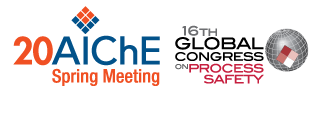

Hoorelbeke (2011) suggested to use solid flame inhibitors dispersed into the vapour cloud upon its release. This technology has shown to be effective and has even been tested on full scale showing its potential (Davis et al., 2017).
As a further step into mitigation of vapour cloud explosion the efficiency of aqueous solutions of flame inhibitors was investigated on small-scale (Roosendans et al. 2017) and medium-scale. The small-scale experiments were performed using water mist-potassium carbonate solutions. The experimental results show that by increasing the amount of potassium carbonate in water, an increase of the degree of mitigation (reduction of flame velocity and explosion overpressure) is
observed up to possible full quenching.
To generate water-mists directly at a larger-scale in sufficiently high concentrations a dispersion of superheated aqueous solutions of potassium carbonate was chosen for the medium-scale experiments. These experiments were performed in a 50 m3 obstructed vented volume. The application of super-heated water without inhibitor showed a clear mitigation effect. Introducing superheated aqueous solutions of potassium carbonate however resulted in a reduction of the mitigation effect.
Secondly, an industrial water deluge system was applied. Again, both pure water and inhibitor-solutions were applied. In this case the explosion itself generates fine droplets due to water droplet break-up. At high water loads explosion peak pressures were reduced considerably by the water deluge but a clear effect of adding inhibitor to the water could not be differentiated between the deluge tests using pure water and those performed with inhibitor-solutions. At lower water loadings, the mitigation effect of pure water was near negligible. For these low water loadings inhibitor-solutions however proved to have an effect.
Presenter(s)
Language
Pricing
Individuals
| AIChE Member Credits | 0.5 |
| AIChE Pro Members | $19.00 |
| Employees of CCPS Member Companies | Free |
| AIChE Graduate Student Members | Free |
| AIChE Undergraduate Student Members | Free |
| AIChE Explorer Members | $29.00 |
| Non-Members | $29.00 |
